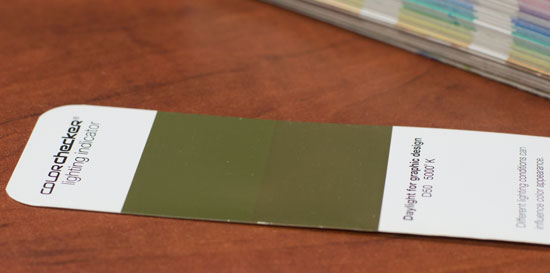
If you read our first installment of Colour Science (“The Science of Color: Perception”), you know that light is one of the primary influencers of our perception of colour. In this blog we’ll expand on some of the terminology and science behind the measurement of light.
Colour Temperature
Colour Temperature: The color temperature of a light source is the temperature of an ideal black body radiator that radiates light of comparable hue to that of the light source.So what does that mean? Imagine a lump of metal, say tungsten for example. If we start continuously heating that of tungsten, eventually it will start to glow red (aka ‘red hot’). As you continue to heat, the hue will change from red to orange, yellow then to blue (referred to as ‘white hot’). If you were measuring the spectrum of the light emitted, you would then have a spectra that corresponds to the temperature of the metal. This is the colour temperature of the light, and it’s expressed in degrees Kelvin.
Ironically, this creates a scale that is opposite of our psychological descriptions of colour. Reddish light usually described as ‘warm’ is actually the lowest on the temperature scale (1700 K), whereas ‘cool’ blue lighting would be at the highest (9000 K).
Below is a chart of common light sources and their colour temperatures:

Lighting Technology
Incandescent
Incandescent lights (conventional light bulbs) are great examples of ‘black body radiators’ as described in the definition. When you turn on the light, electricity heats the tungsten filament in the light bulb to produce light. So the colour temperature of incandescent light is the actual temperature of the filament — 2700 K, or 2400°C!
Fluorescent and LED
Both fluorescent and LED lights don’t actually produce full spectrum light in the form of a black body radiator. They produce ultra violet or very blue light, and then use phosphorescent coatings to convert that light into different wavelengths, one coating for each wavelength. Because of this, the colour temperature of these lights are referred to as ‘correlated color temperature’, or CCT. The success of these coatings in creating the perception of full spectrum light to our visual systems is varied, even among lights of the same colour temperature. The CIE Color Rendering Index (CRI) is a method of comparing illumination to a reference source of the same colour temperature, higher numbers are better.
Sunlight
You may have noticed that sunlight appears more than a few times in the chart above. The sun closely approximates a black body radiator with the colour temperature of 5900 K — when measured above the atmosphere. Back on earth, due to the scattering of light through the atmosphere, the colour temperature of sunlight can vary anywhere from 1850 K to 7000 K depending on the conditions.
How it all applies to Print
When viewing colour proofs or ink drawdowns, it’s always necessary to be mindful of the type of light you are using. As explained in our previous article, colours that match under one light source don’t necessarily match under a different one. The graphics arts standards for illumination are published by the International Commission on Illumination (or CIE — it’s French). The standard in North America is D50, which is a colour temperature of 5000 K. Always try to view critical colour under the correct lighting conditions.
An excellent way to confirm your lighting: newer Pantone Plus guides have a ColorChecker lighting indicator at the back of the book.
Get in Touch
Have a project to quote? Get in touch with a Hemlock Display print specialist. We’re here to help!
